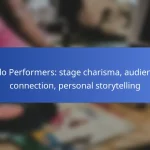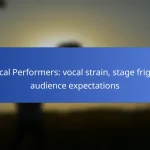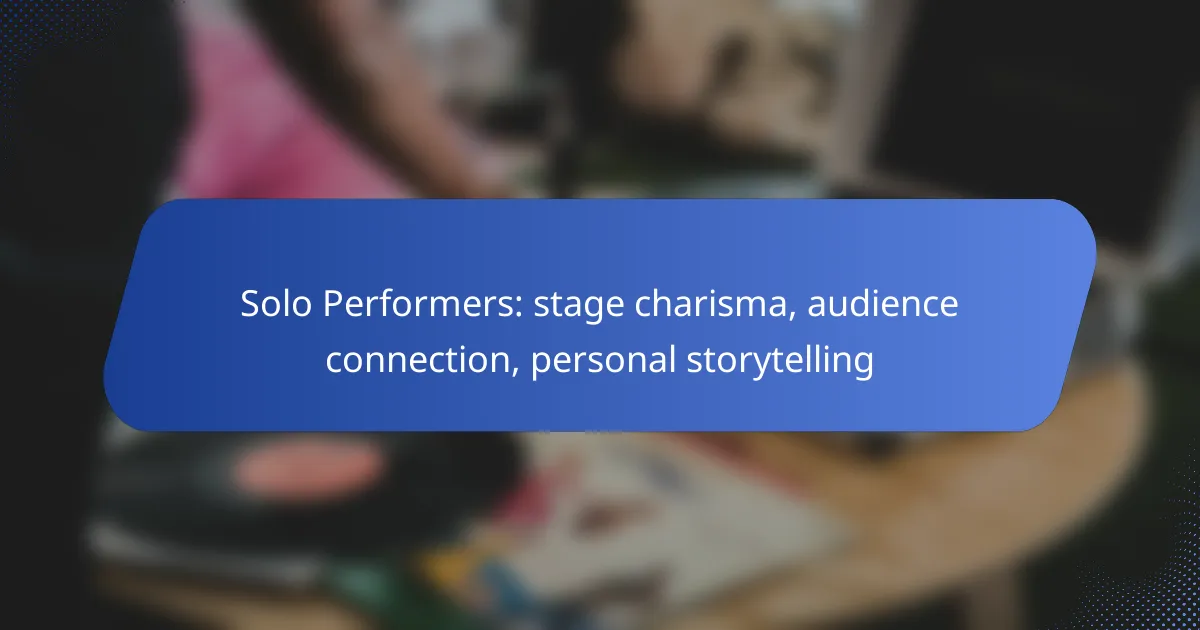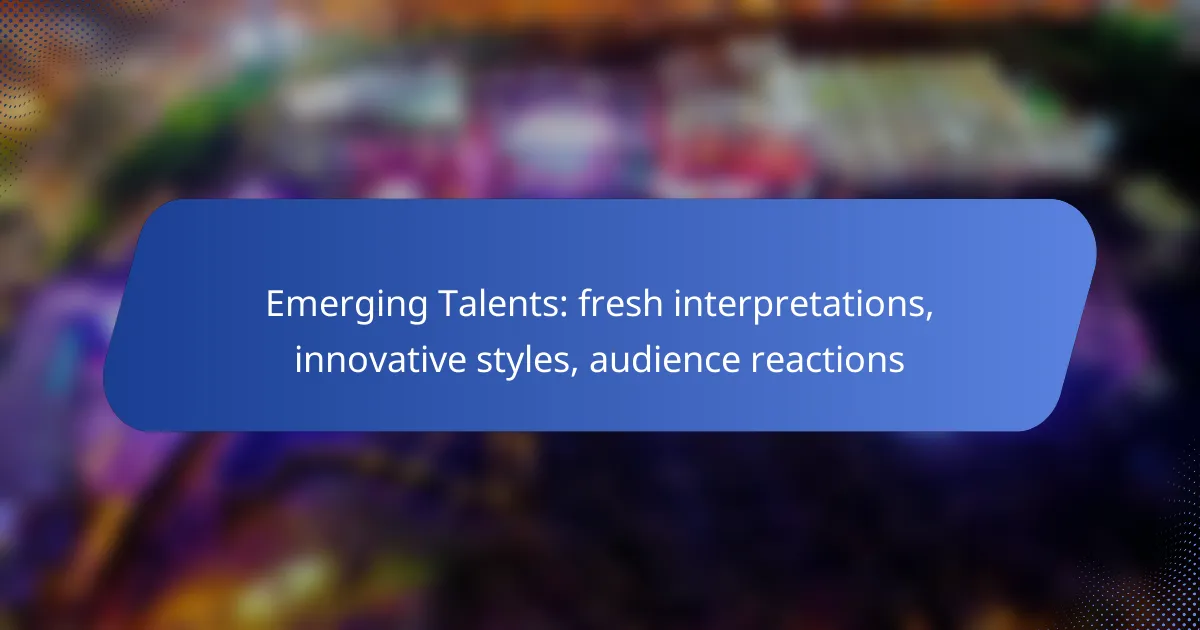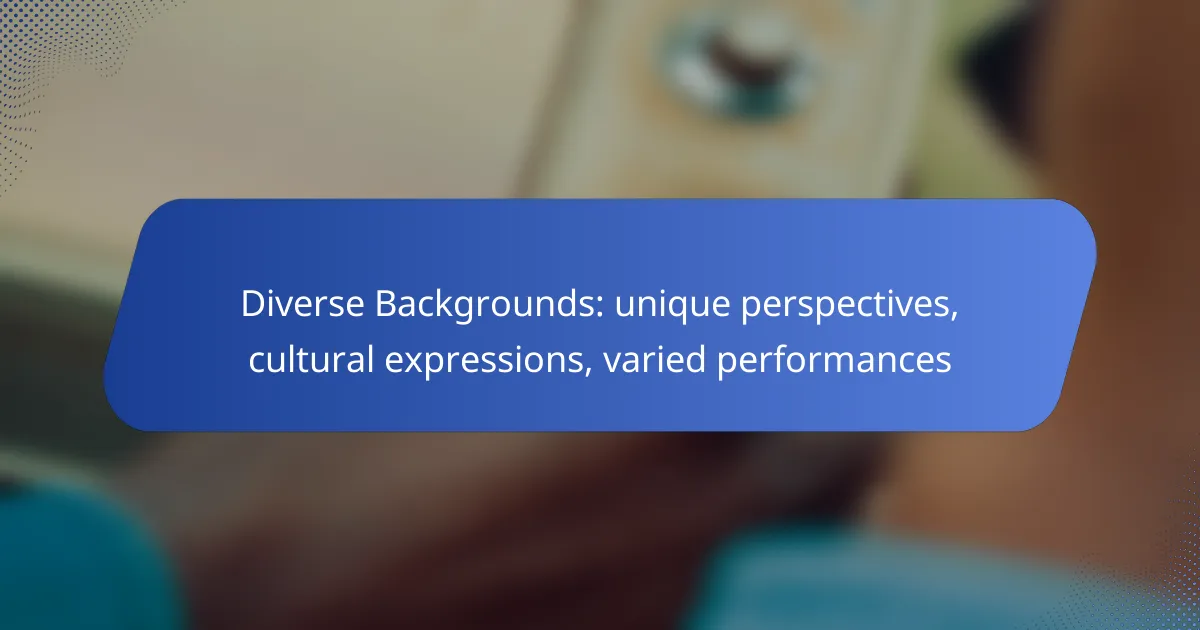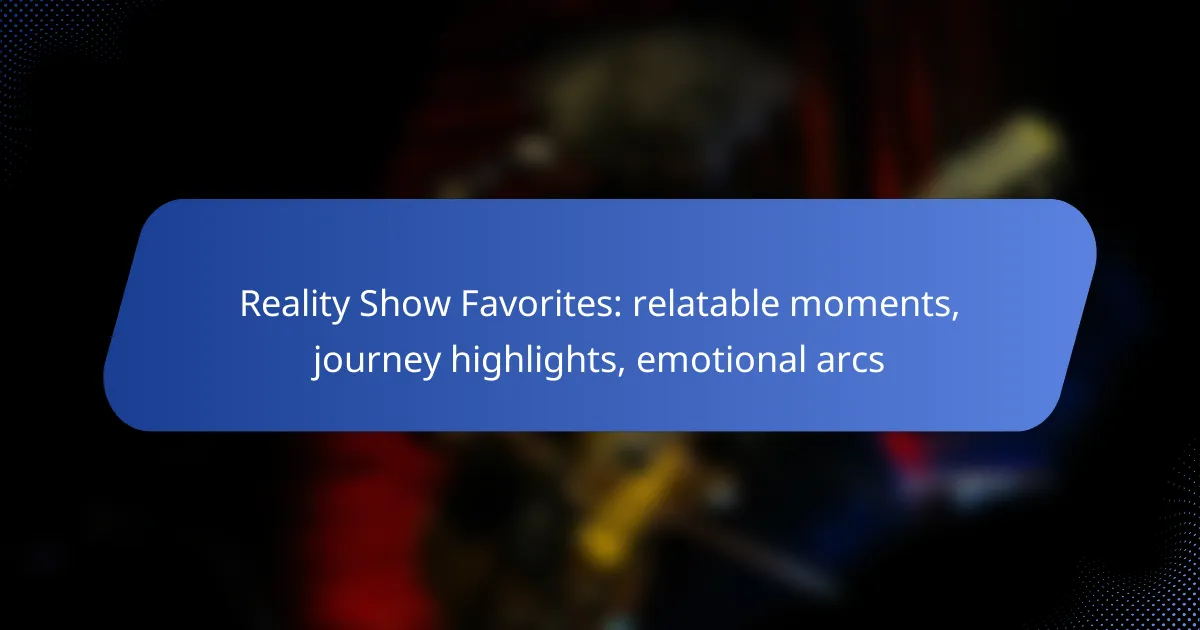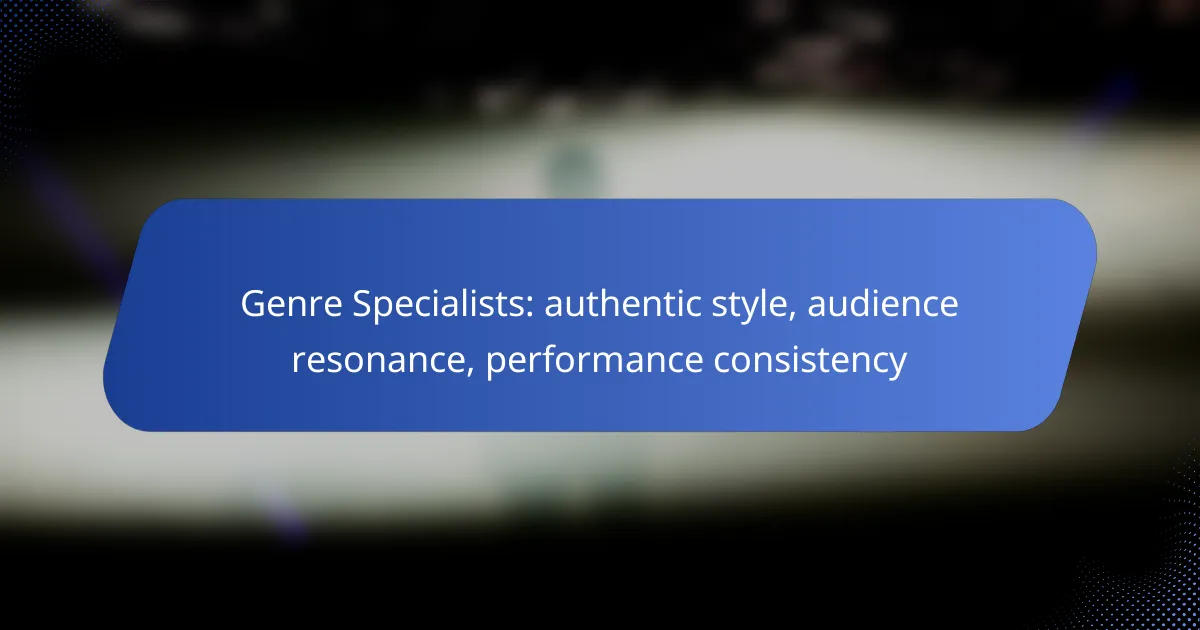Solo performers possess a unique ability to captivate audiences through their stage charisma and personal storytelling. By mastering techniques such as body language, vocal skills, and interactive methods, they forge deeper connections that resonate emotionally with viewers. This blend of engagement and authenticity not only enhances the performance but also leaves a lasting impression on the audience.
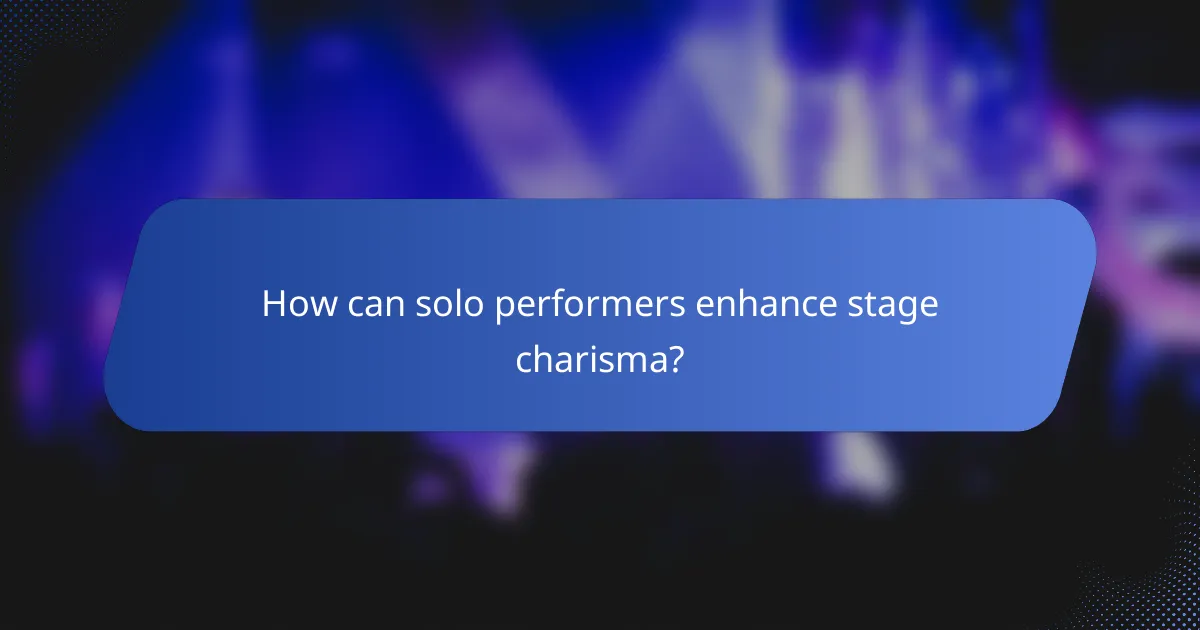
How can solo performers enhance stage charisma?
Solo performers can enhance their stage charisma by mastering techniques that engage the audience and create a memorable experience. This involves a combination of body language, vocal skills, eye contact, confidence-building practices, and the effective use of props and costumes.
Body language techniques
Effective body language is crucial for solo performers as it conveys emotions and intentions without words. Gestures, posture, and movement should align with the performance’s message to reinforce the narrative. For instance, open gestures can invite audience connection, while closed body language may create distance.
Practicing fluid movements and purposeful gestures can enhance expressiveness. Performers should avoid fidgeting and instead use their space confidently, moving toward the audience to draw them in.
Vocal modulation strategies
Vocal modulation involves varying pitch, volume, and pace to maintain audience interest and convey emotions. A dynamic vocal range can emphasize key points and create dramatic tension. For example, lowering the voice can instill suspense, while a higher pitch can express excitement.
Practicing vocal exercises can help performers develop control over their voice. Techniques such as breath support and resonance exercises can improve clarity and projection, ensuring that every audience member can hear and feel the performance.
Eye contact importance
Maintaining eye contact is vital for establishing a connection with the audience. It creates intimacy and engagement, making spectators feel involved in the performance. Solo performers should aim to make eye contact with different audience members throughout the show to foster a sense of inclusion.
Avoiding prolonged gazes at a single point can prevent disengagement. Instead, performers can scan the audience, pausing briefly to connect with individuals, which enhances the overall impact of the performance.
Confidence-building exercises
Confidence is key for solo performers to project charisma on stage. Regular practice, such as rehearsing in front of friends or using video recordings for self-assessment, can help build assurance. Visualization techniques, where performers imagine a successful performance, can also enhance self-belief.
Additionally, engaging in physical activities like yoga or dance can boost overall confidence and body awareness, which translates to a more commanding stage presence.
Use of props and costumes
Props and costumes can significantly enhance a solo performance by adding visual interest and supporting storytelling. Thoughtfully chosen items can symbolize themes or character traits, making the narrative more relatable. For example, a simple hat can transform a character’s identity instantly.
Costumes should be comfortable and allow for movement while reflecting the character’s personality. Performers should ensure that any props are easy to handle and integrate seamlessly into the performance to avoid distractions.
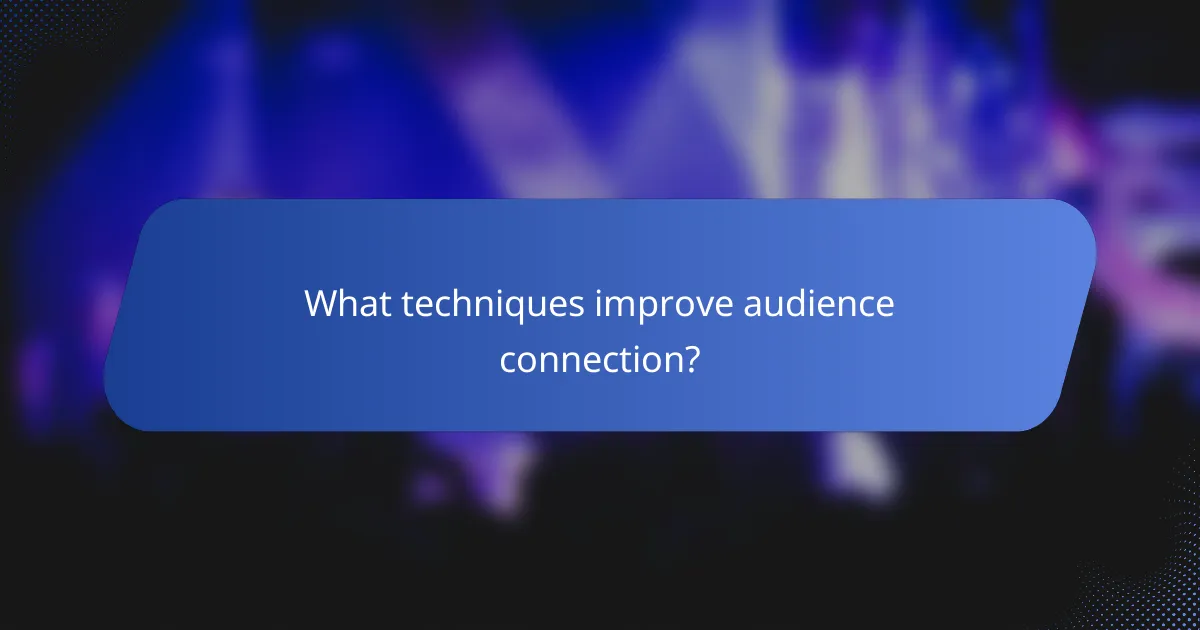
What techniques improve audience connection?
Techniques that enhance audience connection include storytelling, interactive methods, reading reactions, and using humor. These strategies help performers engage their audience on a deeper level, fostering a memorable experience.
Engagement through storytelling
Storytelling captivates audiences by creating relatable narratives that resonate emotionally. A personal story can evoke empathy, making the audience feel more connected to the performer. Aim to weave in elements of vulnerability and authenticity to strengthen this bond.
Consider using anecdotes that reflect shared experiences or universal themes. This approach not only entertains but also invites the audience to reflect on their own lives, enhancing their connection to your performance.
Interactive performance methods
Interactive performance methods involve engaging the audience directly, fostering a sense of participation. Techniques such as asking questions, inviting volunteers, or incorporating audience suggestions can create a dynamic atmosphere. This interaction can make the performance feel more personal and tailored to the audience’s reactions.
For example, you might ask the audience to shout out their favorite songs or share brief stories related to your theme. This not only breaks the barrier between performer and audience but also encourages a lively exchange of energy.
Reading audience reactions
Reading audience reactions is crucial for adapting your performance in real-time. Pay attention to body language, facial expressions, and vocal responses to gauge their engagement. This awareness allows you to adjust your pacing, tone, or content to maintain interest and connection.
For instance, if you notice a dip in energy, consider shifting your approach or introducing a more engaging segment. Being responsive to the audience can significantly enhance their overall experience and connection to your performance.
Building rapport with humor
Humor is an effective tool for building rapport with your audience. It lightens the atmosphere and makes the performer more relatable. Incorporate light-hearted jokes or playful banter that aligns with your performance style and audience demographics.
Be mindful of cultural sensitivities and avoid humor that could alienate or offend. A well-timed joke can break the ice and create a shared moment of laughter, fostering a sense of community among the audience members.
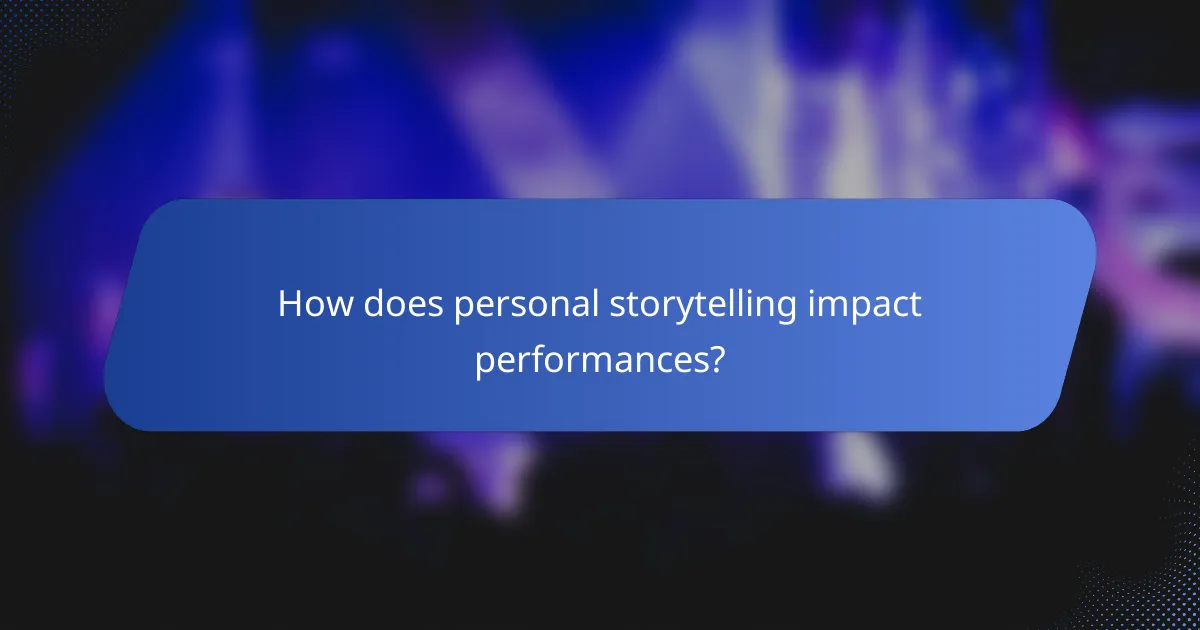
How does personal storytelling impact performances?
Personal storytelling significantly enhances performances by creating a deeper connection between the performer and the audience. It allows the audience to engage emotionally, making the experience more memorable and impactful.
Authenticity in narratives
Authenticity is crucial in storytelling as it fosters trust and relatability. When performers share genuine experiences, they resonate more with the audience, making the narrative feel real and engaging.
To maintain authenticity, performers should draw from their own life experiences and emotions. This approach not only enriches the story but also encourages the audience to connect on a personal level.
Relatable themes and experiences
Incorporating relatable themes helps bridge the gap between the performer and the audience. Common experiences such as love, loss, and personal growth can evoke empathy and understanding.
Performers should consider their audience’s demographics and cultural backgrounds when selecting themes. Tailoring stories to reflect shared experiences can enhance engagement and foster a sense of community.
Structuring a compelling story
A well-structured story captivates the audience and maintains their interest. A typical structure includes a clear beginning, middle, and end, allowing for a natural flow that guides the audience through the narrative.
Performers can enhance their storytelling by using techniques such as building tension, incorporating vivid imagery, and employing a strong emotional arc. Practicing delivery and timing can also significantly improve the overall impact of the story.
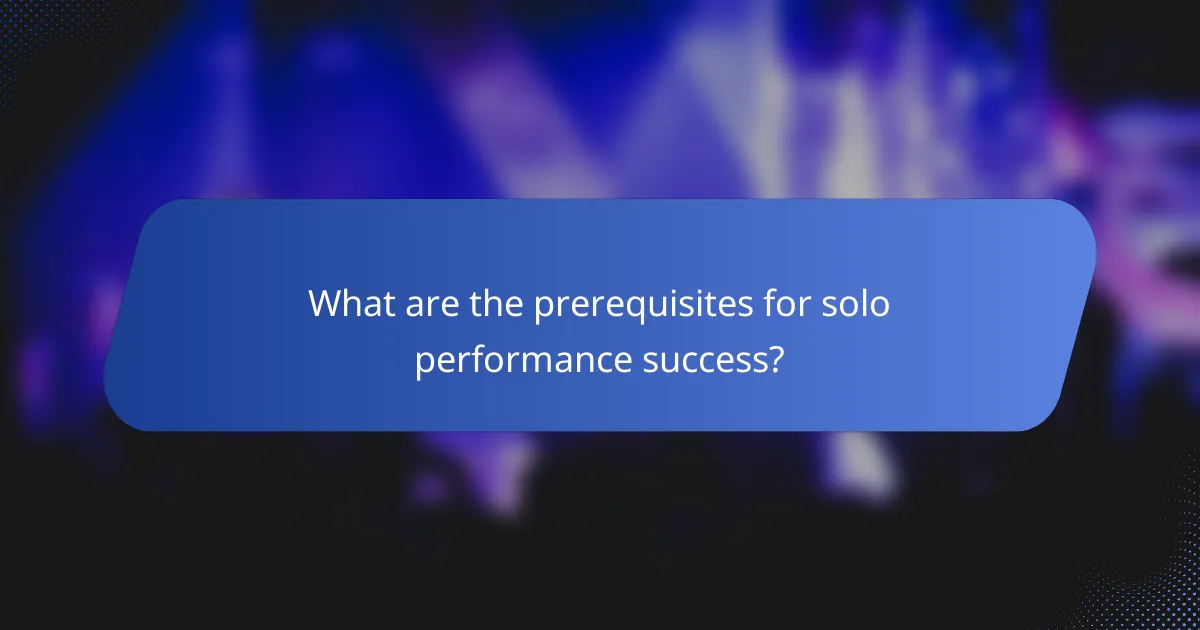
What are the prerequisites for solo performance success?
Successful solo performance hinges on a few key prerequisites: understanding your audience, consistent practice, and selecting the right venue. These elements collectively enhance stage charisma, audience connection, and the effectiveness of personal storytelling.
Understanding your audience
To connect with your audience, you must first understand who they are. Consider their demographics, interests, and cultural backgrounds, as these factors influence their expectations and reactions. Tailoring your performance to resonate with your audience can significantly enhance engagement.
Engage in pre-show research by gathering insights through social media, surveys, or informal conversations. This knowledge allows you to adjust your content and delivery style to better align with audience preferences, making your storytelling more impactful.
Practicing regularly
Regular practice is essential for honing your performance skills and building confidence. Aim to rehearse multiple times a week, focusing on different aspects such as delivery, timing, and emotional expression. This routine helps you refine your material and become more comfortable on stage.
Incorporate feedback from peers or mentors during practice sessions. Constructive criticism can help identify areas for improvement and enhance your overall performance quality. Consider recording your rehearsals to review your body language and vocal delivery, which are crucial for captivating an audience.
Choosing the right venue
Selecting an appropriate venue is vital for maximizing your performance’s impact. Consider factors such as audience size, acoustics, and atmosphere. A venue that aligns with your performance style can enhance the overall experience for both you and your audience.
Research potential venues by attending events there or reviewing past performances. Pay attention to the layout and seating arrangements, as these can affect audience engagement and interaction. Ensure the venue supports the technical requirements of your performance, such as sound equipment and lighting, to create a professional atmosphere.
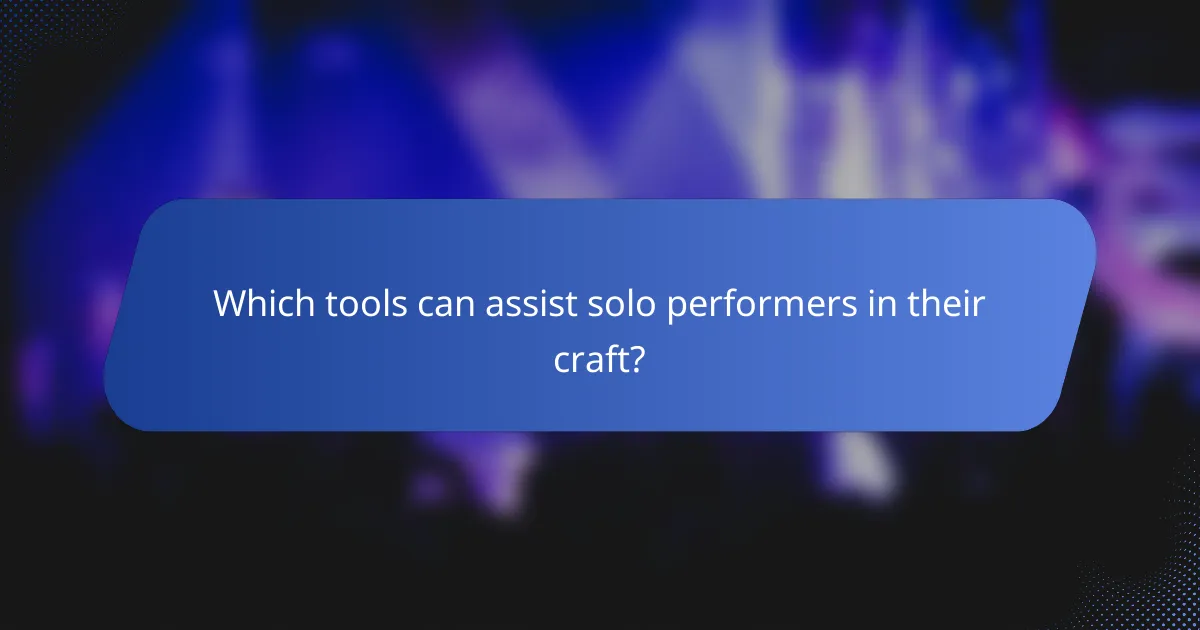
Which tools can assist solo performers in their craft?
Solo performers can enhance their craft using various tools designed to improve skills, stage presence, and audience engagement. These tools range from coaching platforms to software that analyzes performance, helping artists refine their techniques and connect more effectively with their audience.
Performance coaching platforms
Performance coaching platforms offer personalized guidance and feedback to solo artists. These platforms typically connect performers with experienced coaches who can provide insights on vocal techniques, stage presence, and audience interaction.
Some popular platforms include MasterClass, which features lessons from renowned performers, and TakeLessons, where users can find local or online coaches. When selecting a platform, consider factors such as the coach’s expertise, user reviews, and the specific skills you wish to develop.
Video analysis software
Video analysis software allows solo performers to review their performances critically. By recording and analyzing their shows, artists can identify strengths and weaknesses in their delivery, body language, and audience engagement.
Tools like Coach’s Eye and Ubersense enable performers to slow down footage, annotate key moments, and track improvements over time. When using video analysis, focus on specific aspects of your performance, such as timing and emotional expression, to make targeted adjustments.
